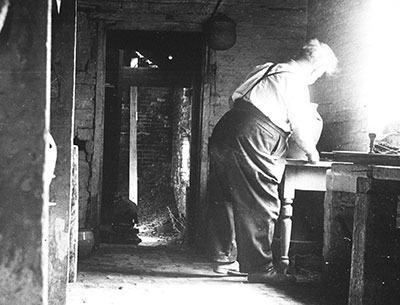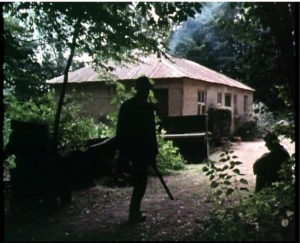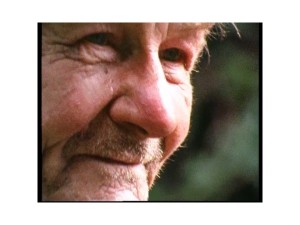Category Archives: Uncategorized
On Saturday, April 9th, the glorious colours of the newly restored copy will grace the screen at the prestigious Lincoln Center in the heart of New York City, home to a dazzling display of the arts which includes the world famous Metropolitan Opera House, the New York Ballet, CMS, the nation's premiere chamber music organization, as well as Jazz, Theatre and of course its Film Society, host of the film festival, The Art of the Real, starting on April 8th.

The Film Society describes the aim of the Festival thus:
"Our annual nonfiction showcase, founded on the most expansive possible view of documentary film, returns with new work from around the world and in a variety of genres. This year’s festival includes a retrospective of a titan of the avant-garde film world, Bruce Baillie; New York premieres of new films by Roberto Minervini, Ben Rivers, José Luis Guerín, and Thom Andersen; as well as the usual eclectic, globe-spanning host of discoveries by artists who are reenvisioning the relationship between cinema and reality. With many filmmakers appearing in-person with their work, Art of the Real continues to be one of the essential showcases for boundary-pushing nonfiction film."
Among this eclectic selection is our own Moon & Sledgehammer. We feel highly honoured to be included in such high calibre company and are delighted that Philip Trevelyan's work is being given the recognition it has long deserved.
Now is the time to tell all your American friends to get their tickets fast before they are all gone. Click here to secure your tickets now.
It will screen at the Francesca Beale Theater at 6.15pm on Saturday, April 9th.

Film Society at the Lincoln Center in New York
April 3 – May 15, 2016
Odes to Land and Labors of Love. The Films of Philip Trevelyan.
Philip Trevelyan (b. 1943) is a legendary yet sorely unheralded British filmmaker rooted in the rich tradition of poetic documentary that flourished in England during the Thirties. His lyrical films offer portraits of resolutely local communities seemingly fixed in time and people who live in intimate communion with the land. The Ship Hotel – Tyne Main is the name, subject and location of his arguably most exemplary film, a moving portrait of a Tyneside pub that captures the melancholic utopia of a Sunday gathering of singers, domino-players and lovers, joined briefly in drinks, garrulous affection and rousing song. Completed as his degree film at the Royal College of Art, The Ship Hotel – Tyne Main reveals the equally anthropological and poetic gaze that gives Trevelyan’s filmmaking such a rare sensitivity to the subtlest nuances of place and gesture. Trevelyan masterfully interweaves the distinct voices and lived experiences embodied by the pub-goers into a composite portrait tracing the deeper history of heavy industry in Northern England with the unspoken dreams of young and old gathered around the pub’s flickering hearth fire. Equally impressive as Trevelyan’s camerawork is his close attention to sound and the musicality of the human voice, a love of rhythmic cadence that would culminate, years later, in a moving tribute to poet Basil Bunting.
While Trevelyan himself openly embraces his close allegiance to British documentarians such as John Grierson and Basil Wright, his singular artistic sensibility should also be traced hereditarily to his father, the celebrated painter Julian Trevelyan, and his mother, the influential potter Ursula Mommens. For, guided by his parents’ example, Trevelyan pursues cinema less as a profession than a vocation, a higher calling, a labor of love. This same attitude is expressed by the devotion to their craft of the poets, potters, farmers, musicians and inventors who inhabit Trevelyan’s films and by the patient intimacy that gently connects his camera and subjects. Yet the abiding interest of Trevelyan’s films in the distinct local and rural life unique to England must also be tied to his remarkable dual career as a pioneering organic farmer who brought new innovation to chemical-free agriculture through his design of award-winning tools for weeding without pesticides. Big Ware, a portrait of an aging potter still working tirelessly, delights as both a documentary of a dying art and an ode of sorts to English soil, the clay-veined terroir transformed into moon-shaped vessels.
Largely underappreciated, even in his native land, Trevelyan found a sudden new fame with the recent rerelease on DVD of his now best-known film The Moon and the Sledgehammer, a portrait of an eccentric family living willfully off the grid of modern life in a ramshackle compound dedicated to steam engines and dreams of other times. An unexpected lament for the end of the Industrial Age, The Moon and the Sledgehammer is both a strong critique of the hectic, unthinking pace of modern life and a poignant wish for a woefully lost connection to the land. Many have seen the strong connections between Trevelyan’s cult film and the work of younger British filmmakers such as Ben Rivers and Luke Fowler.
The first retrospective dedicated to Philip Trevelyan, this program brings together films spanning his entire career, with Trevelyan present to introduce and discuss his work. Also joining the program is producer Katy MacMillan and Chris Killip, VES Professor and celebrated photographer, whose own pioneering early work also explored the Tyneside region. – Haden Guest
Film descriptions by Philip Trevelyan.
 The Moon and the Sledgehammer
The Moon and the Sledgehammer
Directed by Philip Trevelyan
UK 1971, DCP, color, 65 min
This film is a brief encounter with an unusual, complex family who retreated to the woods, working primarily as agricultural contractors and engineers. In the summer months they also provided steam and electrical power for the circus; the family’s father, Mr. Page—affectionately known as “Oily Page”—even became a stand-in performer in the ring. Influenced by the book of Revelations, the family was suspicious of society and progress. The development of modern agriculture in Britain’s post-war drive for cheaper food removed people from the land. For Mr. Page, this social tragedy and waste was exemplified by the idea of sending people to the moon, which was about to happen when the film was recorded. However, alongside the suspicion and unhappiness that grew out of the family’s retreat from society, they never let go of a simple, infectious enjoyment of life. This is captured by the grown-up children’s re-enactments of happy times or by the youngest son when he describes the sound of steam engines, climbs trees, or tells us that he has observed the moon through a homemade telescope.
 Lambing
Lambing
Directed by Philip Trevelyan
UK 1971, 35mm, color, 65 min
This is a film about a traditional Sussex shepherd who we follow from morning to night, through snow and wind, as he works alone with his flock. This was my first proper journey into filmmaking, and my subject was a person I had worked for and admired as a boy. We used an Arriflex camera with fixed lenses and occasionally resorted to a simple wind-up camera. No electricity was used for any lighting and all sound was “wild.”
The film is constructed from carefully edited moments in the shepherd’s routine work. His passing comments about how to deliver or feed lambs are our only guide. He sometimes reflects on the difficulties he encounters, such as the deaths of lambs or the bitterly cold snowfall. On the whole, we learn that he loves his work and that he is happy when resting in his chair by the fire, making a cup of tea or warming milk for the orphan lambs. If the film has a climax, it is captured in the struggle of a ewe giving birth to its lamb. The film ends as the evening turns to night and the shepherd returns to his chair by a warm fire: he pulls a blanket over himself and quietly sings himself to sleep.
 The Ship Hotel – Tyne Main
The Ship Hotel – Tyne Main
Directed by Philip Trevelyan
UK 1967, 16mm, b/w, 35 min
Initially, I took still photographs and wrote notes on my visits to a special and intimate riverside pub, used by engineers, ex-coal miners, factory workers and their families. The beer was cheap and well kept, singing was always encouraged and the people were close friends. There were several tales about the pub being a meeting place for lovers; I decided to add it to the purely documentary material, so the film includes three local friends who re-enact this element.
The film takes place on a Sunday, and the landlord and his wife rise early to prepare themselves and the pub for the day ahead. We see their regular customers arriving, people at the darts board, the pub gradually filling. Suddenly we meet two retired coal miners competing at dominoes. Old Tina watches the fire and enjoys a dance. Her presence provides a vehicle for reflection in several scenes. The film reaches a climax when the pub is full, the mouth organ is playing, and the singing and dancing reaches its height. It calms down when the landlord and his wife sing their love song. Before this, we have observed “Dicky,” the tattooed “rag and bone” collector, who lives alone and uses a horse and cart for his work: he is a legendary figure, partly because he once swam the river Tyne in winter, for a bet. At the end of the film, he walks out of the pub towards his home and stops for a moment, to silence a small example of the technology that interferes with the world that he knows. Well warmed by the drink, he wanders into the uncertainty of a foggy night….
 Big Ware
Big Ware
Directed by Philip Trevelyan
UK 1975, 16mm, color, 40 min
This is a record of the last pottery in England that made the everyday pots that households and businesses have used for centuries. The potter, Mr. George Curtis, remembers that, in his youth, he helped fill whole railway-goods carriages with earthenware pottery. Even as the film was being made, his orders included huge numbers of nesting bowls, made especially for the racing pigeons kept in lofts by the working people of Northern England. The last man to be continuing the tradition, Mr. Curtis digs his own clay, prepares it, throws it, fettles it and fires it in his kiln. His performances at the pottery wheel demonstrate powerful and extraordinary skills; George’s modest claim to fame is his throwing speed, which kept him in work throughout his life. His enthusiasm and knowledge are infectious, while the craft itself is fascinating. The film follows him while he talks us through the various tasks. Toward the end of the film, he taps the fired pots as they come out of the kiln: “You can always tell a good pot by the sound of it.” All that he shows us rings true.
 K. 491 in Preparation
K. 491 in Preparation
Directed by Philip Trevelyan
UK 1983, 16mm, color, 55 min
The treatment for this experimental production was based on the idea that before a musical performance, principal players work on their parts and that their private practice allows them a deep exploration of the music. As an amateur bassoon player, my own practice suggested that this was often true. Could this interior feeling be conveyed on film? There were three conditions imposed on the production: every note of the musical score was to be played, there were to be no words, and the programme (which was commissioned by television) had to be an hour long.
Everything takes place in and around the venue for the concert, which is an imposing 18th century house. I knew that the pianist would be practising on the piano in the house and that, because the orchestral members were staying in the same house, it seemed likely that they might also practice, albeit in separate rooms. My idea was to join together the pianist’s solo work with the string and wind players’ practice in a sequence of continuous musical coincidence. Meanwhile, I noticed that farmers and shepherds were also busy with their work outside. It felt to me that these two worlds could be shown to coexist, and that collisions between the inside and outside activity might add an extra dimension to the production.
 Basil Bunting
Basil Bunting
Directed by Philip Trevelyan
UK 1982, 16mm, color, 60 min
A lot of this production had been beautifully shot by members of the Amber film co-op, when I was asked to shape and edit the material. The film is based on Basil Bunting’s magnificent recording of his autobiographical poem “Briggflats.” Bunting believed strongly that the sound of poetry being read aloud was far more informative than extracting meaning from the page. The poem refers to the rhythm and sound of Scarlatti’s music: it takes us on journeys through aspects of Bunting’s extraordinary life: his life as a Quaker and as a conscientious objector (1918), as a sailor or in Italy with Ezra Pound, and in Persia where he was an Intelligence officer, Timescorrespondent and assistant to the consul. But above all, the poem constantly returns to his adolescent love for a young girl in the North of England, where the heart of the poem resides.
While editing, I separated Bunting’s reflections on poetry or quiet thoughts on life from the progression of the poem; sometimes the gentleness of his voice turns these words into a form of poetry. At one point, we accompany him on his journey to “Briggflats” where much of his adolescence was spent. As his little car speeds through a big landscape of northern hills, Bunting’s wonderful rendering of the poem recalls ancient kings, their legendry battles for land… and his own relentless search for the truth.
Harvard Film Archive is a division of Fine Arts Library of the Harvard College Library.
Copyright © 2016 President and Fellows of Harvard College.
MR. PAGE GOES
TO HARVARD

Harvard University
FIRST RETROSPECTIVE OF TREVELYAN'S FILMS TO BE SHOWN AT HARVARD UNIVERSITY
The magic of THE MOON AND THE SLEDGEHAMMER is reaching dizzying heights. Mr. Page’s straightforward wisdom on life is headed to the hallowed halls of Harvard University where America’s brightest will hear about how having a monkey as a pet beats a fox but it’s not as good as a kangaroo… And why we should be worrying more about what’s happening on earth without bothering about going to the moon. The moon is fine up there… as long as I’ve got room to swing a sledgehammer…
Philip Trevelyan Retrospective
Harvard University Carpenter Center for the Arts and the Lincoln Center, New York.
April 2016
This long overdue retrospective rightly pays tribute to the quietly powerful art of Trevelyan, whose unobtrusive, intimate style is played out in a tapestry of striking images moving unhurriedly to a melody of slow ticking clocks and sentient silences. In this hypnotic world time takes a shift and values change in the blink of an eye.

Seeing Trevelyan’s body of work clarifies not only his outstanding creative style, showing another more poetic way of film making, but also his intent. Constant admiration and respect for his subjects and their skills is omnipresent. In the generations from grandfather to grandchild the world has become almost unrecognizable save for the few remaining pockets of argicultural and artisanal work Trevelyan has uncovered in our modern metropolis. He focuses on the neglected yet important things in life that he feels we should be paying more attention to. This is a unique opportunity to view Trevelyan’s craft as a director of note and style, and gently reminds us to question the price we pay for today’s ever more homogeniesing world.



